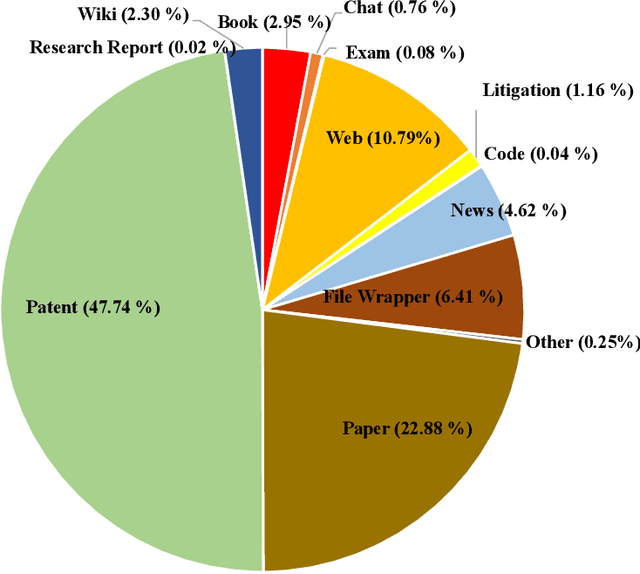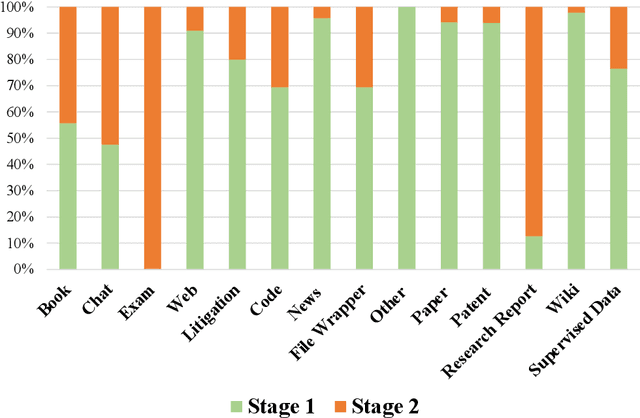Cheng Sun
BOFormer: Learning to Solve Multi-Objective Bayesian Optimization via Non-Markovian RL
May 29, 2025Abstract:Bayesian optimization (BO) offers an efficient pipeline for optimizing black-box functions with the help of a Gaussian process prior and an acquisition function (AF). Recently, in the context of single-objective BO, learning-based AFs witnessed promising empirical results given its favorable non-myopic nature. Despite this, the direct extension of these approaches to multi-objective Bayesian optimization (MOBO) suffer from the \textit{hypervolume identifiability issue}, which results from the non-Markovian nature of MOBO problems. To tackle this, inspired by the non-Markovian RL literature and the success of Transformers in language modeling, we present a generalized deep Q-learning framework and propose \textit{BOFormer}, which substantiates this framework for MOBO via sequence modeling. Through extensive evaluation, we demonstrate that BOFormer constantly outperforms the benchmark rule-based and learning-based algorithms in various synthetic MOBO and real-world multi-objective hyperparameter optimization problems. We have made the source code publicly available to encourage further research in this direction.
Streamlining Biomedical Research with Specialized LLMs
Apr 15, 2025Abstract:In this paper, we propose a novel system that integrates state-of-the-art, domain-specific large language models with advanced information retrieval techniques to deliver comprehensive and context-aware responses. Our approach facilitates seamless interaction among diverse components, enabling cross-validation of outputs to produce accurate, high-quality responses enriched with relevant data, images, tables, and other modalities. We demonstrate the system's capability to enhance response precision by leveraging a robust question-answering model, significantly improving the quality of dialogue generation. The system provides an accessible platform for real-time, high-fidelity interactions, allowing users to benefit from efficient human-computer interaction, precise retrieval, and simultaneous access to a wide range of literature and data. This dramatically improves the research efficiency of professionals in the biomedical and pharmaceutical domains and facilitates faster, more informed decision-making throughout the R\&D process. Furthermore, the system proposed in this paper is available at https://synapse-chat.patsnap.com.
Segment Anything, Even Occluded
Mar 08, 2025Abstract:Amodal instance segmentation, which aims to detect and segment both visible and invisible parts of objects in images, plays a crucial role in various applications including autonomous driving, robotic manipulation, and scene understanding. While existing methods require training both front-end detectors and mask decoders jointly, this approach lacks flexibility and fails to leverage the strengths of pre-existing modal detectors. To address this limitation, we propose SAMEO, a novel framework that adapts the Segment Anything Model (SAM) as a versatile mask decoder capable of interfacing with various front-end detectors to enable mask prediction even for partially occluded objects. Acknowledging the constraints of limited amodal segmentation datasets, we introduce Amodal-LVIS, a large-scale synthetic dataset comprising 300K images derived from the modal LVIS and LVVIS datasets. This dataset significantly expands the training data available for amodal segmentation research. Our experimental results demonstrate that our approach, when trained on the newly extended dataset, including Amodal-LVIS, achieves remarkable zero-shot performance on both COCOA-cls and D2SA benchmarks, highlighting its potential for generalization to unseen scenarios.
Sparse Voxels Rasterization: Real-time High-fidelity Radiance Field Rendering
Dec 05, 2024Abstract:We propose an efficient radiance field rendering algorithm that incorporates a rasterization process on sparse voxels without neural networks or 3D Gaussians. There are two key contributions coupled with the proposed system. The first is to render sparse voxels in the correct depth order along pixel rays by using dynamic Morton ordering. This avoids the well-known popping artifact found in Gaussian splatting. Second, we adaptively fit sparse voxels to different levels of detail within scenes, faithfully reproducing scene details while achieving high rendering frame rates. Our method improves the previous neural-free voxel grid representation by over 4db PSNR and more than 10x rendering FPS speedup, achieving state-of-the-art comparable novel-view synthesis results. Additionally, our neural-free sparse voxels are seamlessly compatible with grid-based 3D processing algorithms. We achieve promising mesh reconstruction accuracy by integrating TSDF-Fusion and Marching Cubes into our sparse grid system.
FrugalNeRF: Fast Convergence for Few-shot Novel View Synthesis without Learned Priors
Oct 21, 2024Abstract:Neural Radiance Fields (NeRF) face significant challenges in few-shot scenarios, primarily due to overfitting and long training times for high-fidelity rendering. Existing methods, such as FreeNeRF and SparseNeRF, use frequency regularization or pre-trained priors but struggle with complex scheduling and bias. We introduce FrugalNeRF, a novel few-shot NeRF framework that leverages weight-sharing voxels across multiple scales to efficiently represent scene details. Our key contribution is a cross-scale geometric adaptation scheme that selects pseudo ground truth depth based on reprojection errors across scales. This guides training without relying on externally learned priors, enabling full utilization of the training data. It can also integrate pre-trained priors, enhancing quality without slowing convergence. Experiments on LLFF, DTU, and RealEstate-10K show that FrugalNeRF outperforms other few-shot NeRF methods while significantly reducing training time, making it a practical solution for efficient and accurate 3D scene reconstruction.
PharmaGPT: Domain-Specific Large Language Models for Bio-Pharmaceutical and Chemistry
Jul 03, 2024



Abstract:Large language models (LLMs) have revolutionized Natural Language Processing (NLP) by by minimizing the need for complex feature engineering. However, the application of LLMs in specialized domains like biopharmaceuticals and chemistry remains largely unexplored. These fields are characterized by intricate terminologies, specialized knowledge, and a high demand for precision areas where general purpose LLMs often fall short. In this study, we introduce PharmGPT, a suite of multilingual LLMs with 13 billion and 70 billion parameters, specifically trained on a comprehensive corpus of hundreds of billions of tokens tailored to the Bio-Pharmaceutical and Chemical sectors. Our evaluation shows that PharmGPT matches or surpasses existing general models on key benchmarks, such as NAPLEX, demonstrating its exceptional capability in domain-specific tasks. This advancement establishes a new benchmark for LLMs in the Bio-Pharmaceutical and Chemical fields, addressing the existing gap in specialized language modeling. Furthermore, this suggests a promising path for enhanced research and development in these specialized areas, paving the way for more precise and effective applications of NLP in specialized domains.
ASSR-NeRF: Arbitrary-Scale Super-Resolution on Voxel Grid for High-Quality Radiance Fields Reconstruction
Jun 28, 2024Abstract:NeRF-based methods reconstruct 3D scenes by building a radiance field with implicit or explicit representations. While NeRF-based methods can perform novel view synthesis (NVS) at arbitrary scale, the performance in high-resolution novel view synthesis (HRNVS) with low-resolution (LR) optimization often results in oversmoothing. On the other hand, single-image super-resolution (SR) aims to enhance LR images to HR counterparts but lacks multi-view consistency. To address these challenges, we propose Arbitrary-Scale Super-Resolution NeRF (ASSR-NeRF), a novel framework for super-resolution novel view synthesis (SRNVS). We propose an attention-based VoxelGridSR model to directly perform 3D super-resolution (SR) on the optimized volume. Our model is trained on diverse scenes to ensure generalizability. For unseen scenes trained with LR views, we then can directly apply our VoxelGridSR to further refine the volume and achieve multi-view consistent SR. We demonstrate quantitative and qualitatively that the proposed method achieves significant performance in SRNVS.
PharmGPT: Domain-Specific Large Language Models for Bio-Pharmaceutical and Chemistry
Jun 26, 2024



Abstract:Large language models (LLMs) have revolutionized Natural Language Processing (NLP) by by minimizing the need for complex feature engineering. However, the application of LLMs in specialized domains like biopharmaceuticals and chemistry remains largely unexplored. These fields are characterized by intricate terminologies, specialized knowledge, and a high demand for precision areas where general purpose LLMs often fall short. In this study, we introduce PharmGPT, a suite of multilingual LLMs with 13 billion and 70 billion parameters, specifically trained on a comprehensive corpus of hundreds of billions of tokens tailored to the Bio-Pharmaceutical and Chemical sectors. Our evaluation shows that PharmGPT matches or surpasses existing general models on key benchmarks, such as NAPLEX, demonstrating its exceptional capability in domain-specific tasks. This advancement establishes a new benchmark for LLMs in the Bio-Pharmaceutical and Chemical fields, addressing the existing gap in specialized language modeling. Furthermore, this suggests a promising path for enhanced research and development in these specialized areas, paving the way for more precise and effective applications of NLP in specialized domains.
PatentGPT: A Large Language Model for Intellectual Property
Apr 30, 2024



Abstract:In recent years, large language models have attracted significant attention due to their exceptional performance across a multitude of natural language process tasks, and have been widely applied in various fields. However, the application of large language models in the Intellectual Property (IP) space is challenging due to the strong need for specialized knowledge, privacy protection, processing of extremely long text in this field. In this technical report, we present for the first time a low-cost, standardized procedure for training IP-oriented LLMs, meeting the unique requirements of the IP domain. Using this standard process, we have trained the PatentGPT series models based on open-source pretrained models. By evaluating them on the open-source IP-oriented benchmark MOZIP, our domain-specific LLMs outperforms GPT-4, indicating the effectiveness of the proposed training procedure and the expertise of the PatentGPT models in the IP demain. What is impressive is that our model significantly outperformed GPT-4 on the 2019 China Patent Agent Qualification Examination by achieving a score of 65, reaching the level of human experts. Additionally, the PatentGPT model, which utilizes the SMoE architecture, achieves performance comparable to that of GPT-4 in the IP domain and demonstrates a better cost-performance ratio on long-text tasks, potentially serving as an alternative to GPT-4 within the IP domain.
Seg2Reg: Differentiable 2D Segmentation to 1D Regression Rendering for 360 Room Layout Reconstruction
Nov 30, 2023Abstract:State-of-the-art single-view 360-degree room layout reconstruction methods formulate the problem as a high-level 1D (per-column) regression task. On the other hand, traditional low-level 2D layout segmentation is simpler to learn and can represent occluded regions, but it requires complex post-processing for the targeting layout polygon and sacrifices accuracy. We present Seg2Reg to render 1D layout depth regression from the 2D segmentation map in a differentiable and occlusion-aware way, marrying the merits of both sides. Specifically, our model predicts floor-plan density for the input equirectangular 360-degree image. Formulating the 2D layout representation as a density field enables us to employ `flattened' volume rendering to form 1D layout depth regression. In addition, we propose a novel 3D warping augmentation on layout to improve generalization. Finally, we re-implement recent room layout reconstruction methods into our codebase for benchmarking and explore modern backbones and training techniques to serve as the strong baseline. Our model significantly outperforms previous arts. The code will be made available upon publication.
 Add to Chrome
Add to Chrome Add to Firefox
Add to Firefox Add to Edge
Add to Edge